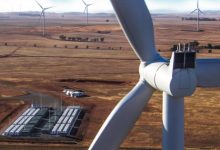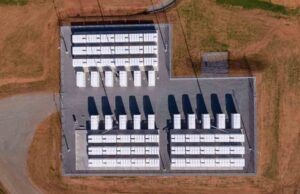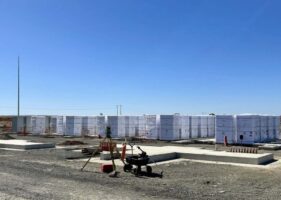Neoen, the French renewable and storage developer that is arguably the most successful company of its type in Australia, says wind, solar and storage projects are getting bigger and more complicated, and new technology will require a “change in philosophy” in the way the grid is managed.
The shift in size and complexity is represented in Neoen’s own portfolio, which includes the country’s biggest solar farm, the biggest batteries, and the first stage of what will likely be the biggest grid-connected wind, solar and battery hybrid project.
“Renewable and storage projects are getting more complex,” the head of Neoen Australia, Louis de Sambucy, says in an interview in the latest episode of RenewEconomy’s popular and weekly Energy Insiders podcast.
“The projects that were easy to build, easy to connect, have already been built in the very early years. We are looking at projects that have a much bigger size, and a higher level of complexity.”
Neoen’s signature projects include, of course, the Hornsdale Power Reserve (aka the original Tesla big battery) that was the first big battery of its scale in the world, and after an expansion two years ago has become the first to deliver grid forming inverter technology to the grid at scale.
It also operates the Australia’s biggest battery – the 300MW/450MWh Victoria big battery – which is largely focused on acting as a sort of sponge for the Victorian grid, as well as providing significant amounts of energy arbitrage.
Neoen’s new projects include the 400MW Western Downs solar farm, which is structurally complete and already the largest in Australia (though not yet fully commissioned) and which will also be accompanied by a 200MW/400MWh battery.
It is also building the first 412MW wind stage of Goyder South, a massive hybrid project that could grow to up to 1200MW of wind, 600MW of solar and 900MW (and several hours storage) of battery capacity.
Half of the first stage of Goyder is being used to meet a contract with the ACT government, along with the 100MW/200MWh Canberra big battery that is nearly complete, and the other half will serve the groundbreaking “baseload renewables” contract with BHP’s giant Olympic Dam mine, backed up by a new battery at Blyth.
De Sambucy says the shift to grid forming inverters, and the charge towards periods of 100 per cent renewables across the country’s main grid, is a profound change.
“The move from grid following inverters to grid forming inverters is, is a significant change of philosophy in the way you you operate your your generator,” he says.
“So it has required extensive extensive testing together with AEMO (the market operator) and ElectraNet (the local transmission network operator).
“It has taken almost almost a year (of testing) because it was the first battery to do that worldwide at the scale. So that’s not something to be surprised of.
“I think that since then, it has been operating as it should, which is great… and I think it’s great that AEMO has created this target of being able to manage the network at 100 per cent renewables by 2025.
“And we need batteries, and we need the tools to be able to do that. And grid forming inverters is one of those of those important tools. So we were very happy to be also part of the solution.”
The irony is that while the technology of grid forming inverters has been improved, the markets to support them have yet to be developed. But de Sambucy already sees big changes in the way that big batteries source revenue, and moving away from the frequency services that they first were focused on.
This, in turn, will lead the batteries to have long duration storage, and Neoen has already made clear that its battery projects will focus on three and four hour durations, and it sees big demand for the sort of 24/7 renewable contracts that it struck with BHP.
Its biggest battery project is likely to be in Western Australia, a uniquely isolated grid with a huge amount of rooftop solar and other renewables that is crying out for storage projects – it does not have any, yet, despite running at an average of 40 per cent renewables in the past year.
Neoen is proposing a 1GW battery with storage duration not yet defined, but likely to be around two hours, so 2GWh, at Collie, the town that has played host to the bulk of the state’s coal generators but is now looking for a new energy and industrial source as the last of these fossil fuel plants wind down.
De Sambucy says the Collie battery, if it is to go ahead, will be built in stages, but he sees big potential for a state where Neoen has played only a minor role till now, in an off-grid solar and battery project for a local mine.
“We’ve set up an office in WA and the development team and we’ve started to grow the team there a year and a half ago, almost two years now,” he says.
“We are looking at battery projects, we are looking at wind projects, I think WA is one part of the network where we will be keen to do good projects.
“I think the demand is going to grow and I’ve had a number of discussions with potential off-takers, confirming that they’re on their journey towards net zero. So there is a need to electrify a number of activities. So I’m quite confident that there will be a demand growing in this area.”
You can listen to the full interview with Louis de Sambucy on the Energy Insiders podcast here.










